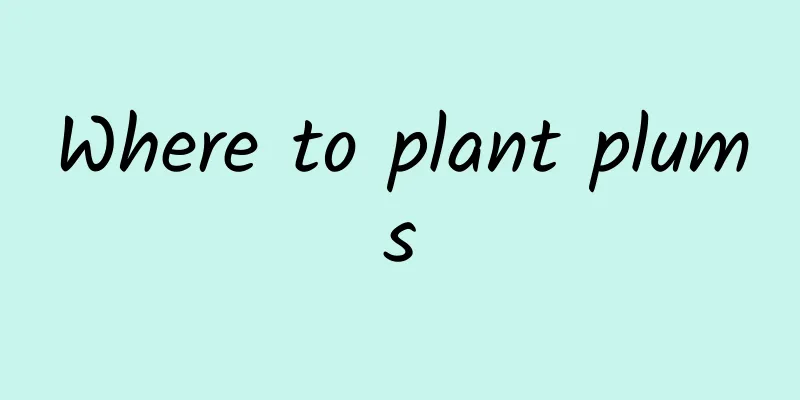Key points for strawberry management in November

|
With the arrival of November, the temperature drops significantly, even below zero in some areas, and rain and snow become more frequent. For strawberry growers, some special management measures need to be taken during this period. The following are technical points for strawberry management in November. 1. Temperature management By November, the greenhouse strawberries have been covered with film and are growing in a relatively closed environment, so temperature management in the greenhouse is particularly important. Temperature control should be adjusted according to the size of the strawberry seedlings. The basic principle is "promote growth of small seedlings and control growth of large seedlings." The specific temperature requirements are as follows: In the initial stage of insulation: keep it at 28-30℃ during the day, ventilate when it exceeds 35℃, keep it at 12-15℃ at night, and not lower than 8℃. Bud stage: 25-28℃ during the day, 10-12℃ at night, not exceeding 13℃. Flowering period: 23-25℃ during the day, 8-10℃ at night. Fruit expansion period: 20-25℃ during the day, 6-10℃ at night. Fruit harvest period: 20-23℃ during the day, 5-7℃ at night. 2. Humidity Management During the entire growth period, the humidity in the greenhouse should be kept as low as possible to reduce the occurrence of high-humidity diseases such as gray mold and powdery mildew. When the first inflorescence differentiates, the air humidity in the greenhouse is maintained at 50%-60%. Maintain a high air humidity in the facility during the initial stage of insulation, and reduce the air humidity appropriately after buds appear. During the flowering period, the air humidity should be maintained at 30-50%. The relative humidity of the air during the fruiting period is 60-70%. 3. Water Management Due to the high temperature in the greenhouse and the large evaporation of soil moisture, watering is required in time. The watering time should be adjusted according to changes in temperature. When the outside temperature is high in the early stage, water should be poured in the evening; when the inside and outside temperatures are lower in the later stage, water should be poured in the morning. After watering, first increase the room temperature, then increase the air volume and reduce the humidity. Watering should not be too frequent, and each time should be thorough. Stop watering about a week before flowering, and water once about 5 days after flowering in combination with fertilization. 4. Lighting Management The intensity and timing of light have a great impact on the yield and quality of greenhouse strawberries. Therefore, in addition to cleaning the greenhouse frequently, the lighting time should be extended as much as possible. When encountering cloudy and snowy weather, it is also necessary to take measures to increase lighting in the shed. 5. Fertilization management After the greenhouse strawberries are covered with insulation, they are in the stage of flower bud development, followed by buds, flowers and fruits soon afterwards. After the top inflorescence is harvested, the axillary inflorescence will grow again and bloom and bear fruit. The plant is under a heavy burden and is prone to premature aging if not fertilized in time. Top dressing should be carried out at least 4 times, before flowering, during fruit expansion, during side inflorescence occurrence, and during side inflorescence fruiting. Try to choose high-quality water-soluble fertilizers , reduce the use of compound fertilizers , and spray potassium dihydrogen phosphate foliar fertilizer on the leaves once every 7 to 10 days. 6. Farming Operations Remove old leaves, yellow leaves, diseased and insect-infested leaves in time to reduce damage caused by pests and diseases, improve ventilation and light conditions, and promote growth. Keep 5 to 6 strong leaves per plant. Remove runners in time to reduce unnecessary nutrient consumption. During the flowering period, measures should be taken to thin out the flowers and fruits, and remove the secondary small and weak flowers. After fruiting, deformed, diseased and small fruits should be thinned out, leaving 4 to 7 fruits in the first inflorescence and 6 to 7 fruits in the second inflorescence. VII. Pest and disease management Diseases: Gray mold and powdery mildew are the main diseases of strawberry, which seriously harm the production of strawberry. Prevention and control methods: Remove dead leaves and old leaves in time to create conditions for ventilation and light transmission, and prevent strawberries from growing in low temperature and high humidity or high temperature and high humidity environments. Drug control: Use Cuibei for spraying, sulfur powder and thiophanate-methyl smoke for fumigation. It is recommended to use Jingbo powdery gray mold prevention and treatment package for control. Pests: The main winter pests are aphids, red spiders, root rot nematodes, bud nematodes, etc. For red spider mites and aphids, it is recommended to use corresponding pesticides for prevention and control, but it should be avoided to use pesticides that are harmful to bees in sheds where there are bees. The above are the key points for strawberry management in November. As the temperature drops, the management of the flowering and fruiting period of greenhouse strawberries becomes more important. You can refer to it based on actual conditions.
|
<<: Grape Management Techniques in November
>>: Which month is best for sowing broad beans?
Recommend
Cultivation methods and precautions of lotus bud
1. Soil To grow lotus flowers, you need loose, br...
Is cedar a flowering plant?
1. Is it a flowering plant? Although it is not ve...
Can olives be grown in the north?
Can olives be grown in the north? Olives can be p...
How to propagate the copper coin grass? Can the copper coin grass be propagated without roots?
1. Seed propagation The time for sowing pennywort...
The difference between honeysuckle and honeysuckle
1. Different smell The difference between the two...
Should Hawaiian bamboo be pruned after it blooms?
1. Should I cut it? Hawaiian bamboo is not actual...
When to sow fennel
The right time to sow fennel Fennel is an annual ...
When is the best time to transplant dragon fruit?
Dragon fruit is a common tropical fruit , which i...
The flower language and cultural background of Chrysanthemi orchid
The flower language and cultural background of Ch...
Cultivation methods and precautions of daffodils
Farming methods Temperature and light Daffodils a...
When is the best time to plant white radish?
When to plant white radish The best time to plant...
People who love flowers, don’t look at these flowers, you will be poisoned!
Petunia Six times profit Baby's breath Margar...
How to fertilize lilac, what fertilizer is best
1. Fertilization time When planting lilacs, if th...
How to raise winter red
1. Maintenance methods 1. Temperature: It has a s...
The flower language and legend of bellflower
The Flower Language of Bluebells Jealousy: In Gre...









